Which Animals Can Live Without Water For Years?
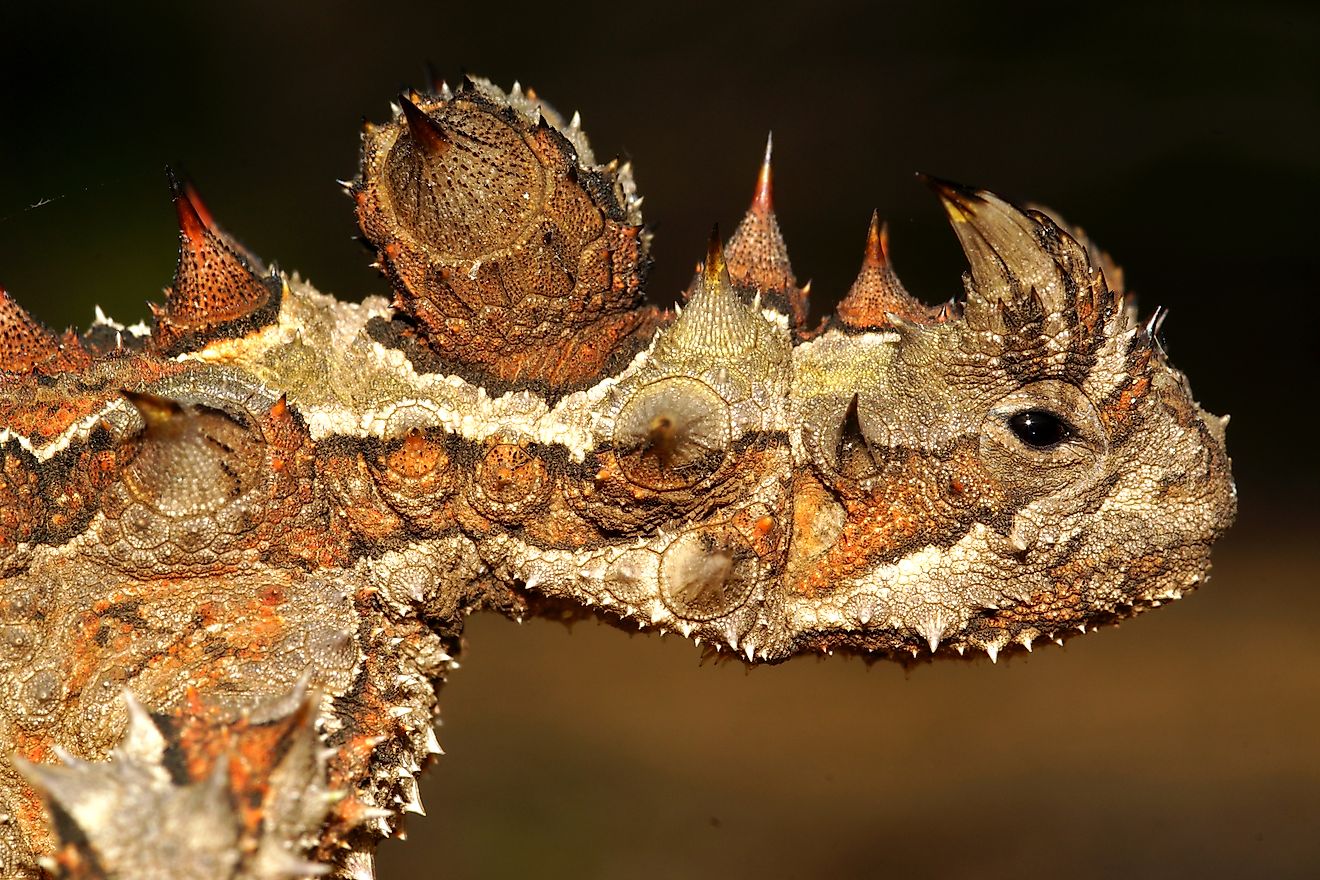
On average, a human can only go for an average of three days without water depending on the climate because the human body loses a substantial amount of water through sweating, breathing, and excretion. In arid areas, animals across the world have had millions of years to adapt to the hostile environments. Every drop of sweat, exhaled breath, and wet excrete increases the chances of death of any desert animal through dehydration. There are a few animals that can survive for years without drinking any water. Some of the popular examples include the desert tortoise, kangaroo rat, the thorny devil, water-holding frog, African lungfish, and desert spade-foot toads.
Kangaroo Rat
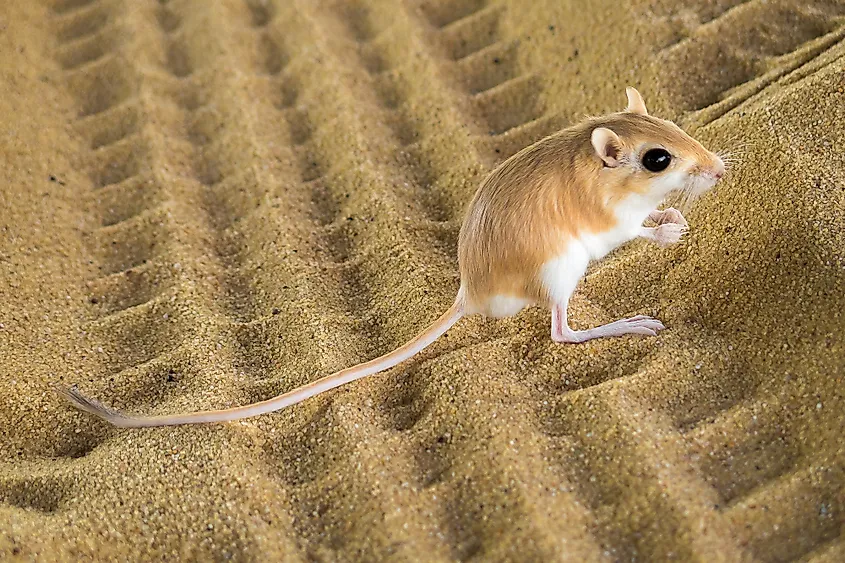
The kangaroo rat (genus Dipodomys) of North America is one of the most specialized animals living in the desert environments and can go for its entire life without water. The small rodent gets its name from is long hind legs (similar to the Australian kangaroo) that enable it to leap long distances as they search for food and water. Some of the adaptations to the arid environment include large cheek pouches that are lined with fur as opposed to saliva which enables the rodent to carry seeds without losing much-needed moisture. Other adaptations, such as highly specialized kidneys with additional tubules, help them in the conservation of water in the body through the extraction of water from urine. The urine of a kangaroo rat is about five times as concentrated as human urine. The kangaroo rat has an oily coat and does not sweat which goes a long way in conserving water in the body. In addition to that, kangaroo rats feed on seeds that are safely hidden in burrows. The seeds once consumed are metabolized to yield energy and water. The nasal passage of this unique animal is also adapted to ensure minimal loss of moisture to the atmosphere.
Water Holding Frog
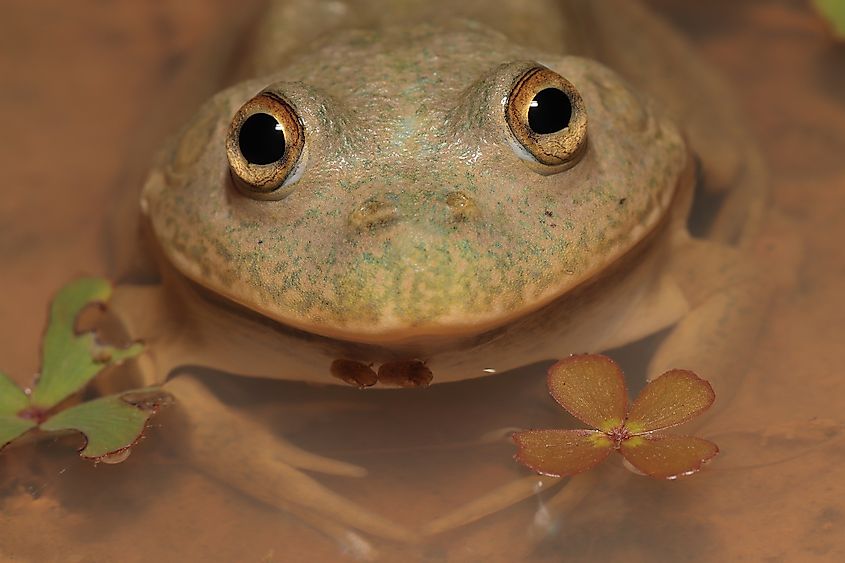
The water holding frog (Cyclorana platycephala) is commonly found in Australian desert areas and has truly unique adaptation mechanisms to the harsh arid environment. During wet seasons, the water holding frog lives like ordinary frogs and then burrow into the soil when dry conditions set in to escape the hostile conditions. The frog has the unique capacity to absorb significant amounts of water through its skin which is then stored in its bladder and body tissues. Once the frog burrows into the soil, it encloses itself in a cocoon made up of its skin to keep from losing water. While in this condition the frog feeds on its skin and can stay in this condition for several years.
West African Lungfish
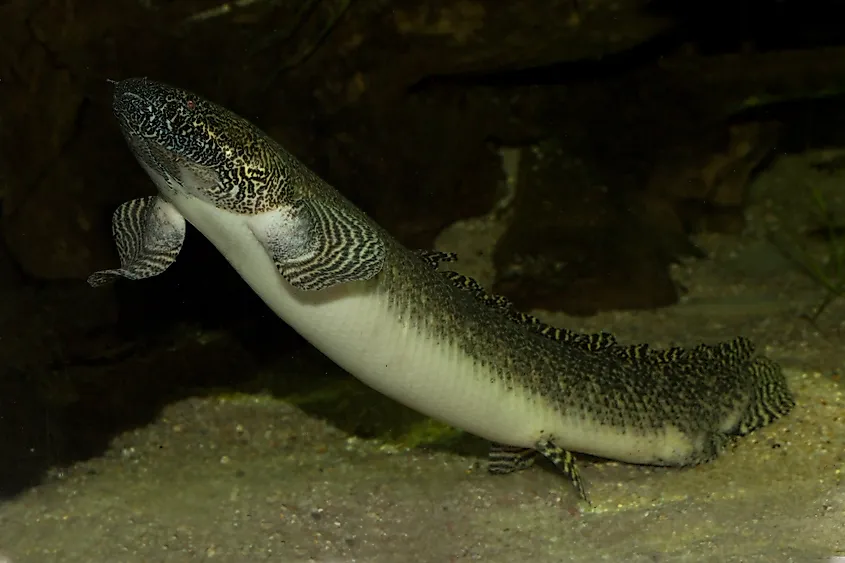
A West African lungfish. Image credit: Podolnaya Elena/Shutterstock.c
The West African lungfish (Protopterus annectens) are truly a wonder to behold. These unique fish have been labeled prehistoric animals due to their survival for nearly 400 million years. These “living fossils,” as they are commonly called in scientific circles, survive through a process of estivation that is quite similar to hibernation. The lungfish has gills like any other ordinary fish which it uses to obtain oxygen from the water but also has a unique adaptation that enables the fish to obtain oxygen from the air. When dry conditions set in, the fish burrows into the mud and can continue living even after the mud dries up. During estivation, the fish excretes a mucus cocoon to protect it from harsh conditions and digests its muscle tissue to get nutrients and can live in this condition for five years.
Thorny Devil
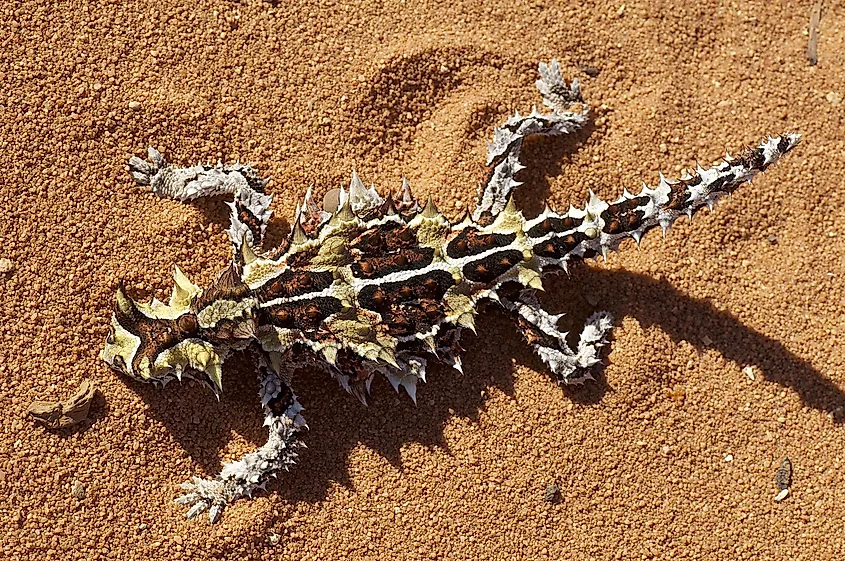
The thorny devil (Moloch horridus), which is also commonly referred to as the thorny dragon, is typically found in desert areas in Central Australia. The thorny devil captures rainfall and dew during drier conditions through layered scales on its body that have a hinge which enables it to trap moisture and water droplets between the scales. The collected water is then transported under the skin to the mouth. The process is enabled by tongue movements that create the needed pressure to draw water to the back of the mouth.
The Couch's Spadefoot Toad
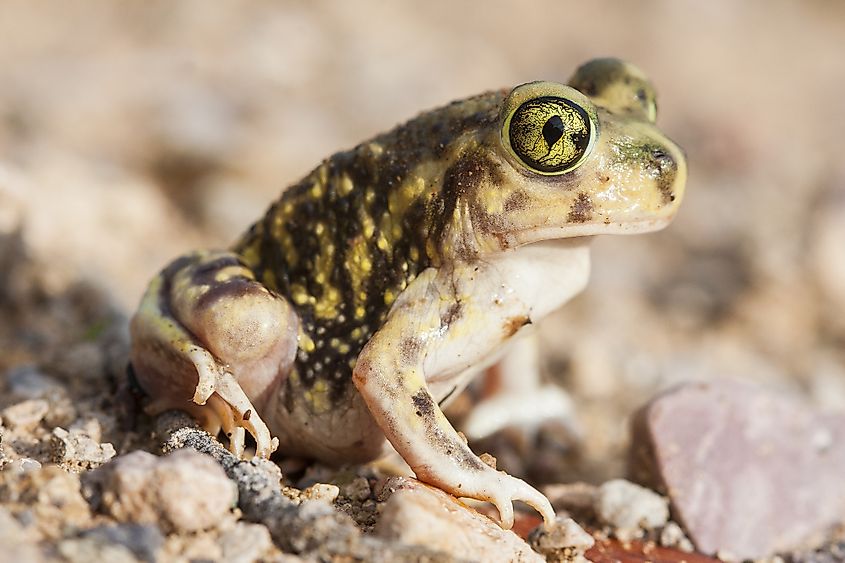
The Couch's spadefoot toad (Scaphiopus couchi), which was recently discovered in the Colorado Desert, has some of the greatest adaptations to desert conditions. These animals have managed to survive in a few isolations such as the edge of dunes and dry washes due to their unique environmental conditions. Spadefoot toads living in the dunes burrow into the permanently wet layer in the sand and remain there for the whole dry period. Others bury themselves beneath dense vegetation. Adult toads retain several layers of partially shed skin which reduce moisture loss by forming semi-impermeable membranes and can remain in that condition for years. The high osmotic concentration greatly increases its ability to retain water and perhaps even extract moisture from damp conditions. These toads also exhibit an extremely accelerated growth rate. Their eggs take less than 48 hours to hatch, and within ten days the tadpoles develop legs. In less than three months, the young toads grow to half the adult size.
Desert Tortoise
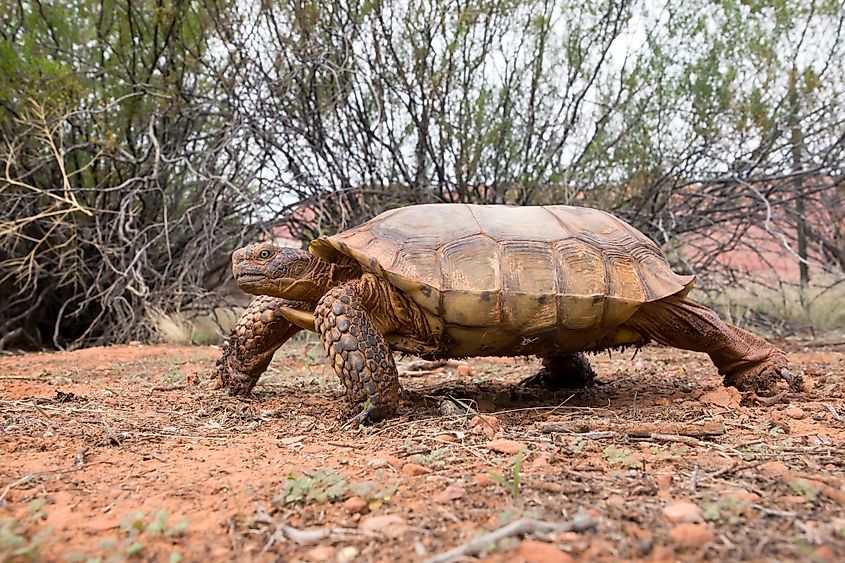
The Gopherus agassizii, which is found in the Mojave Desert, in the Southwestern United States, and Gopherus morafkai, which is found in the Sonoran Desert of Northwestern Mexico, are the two main species of desert tortoise. Their hardy shells, often mistaken for rocks in the desert hold the secret to their survival by offering a huge water storage capacity. These species have an oversized bladder that can carry up to two-fifths of its weight in nitrogen-based wastes, urea, and water. During the wet period, the desert tortoise excretes waste and drinks extra water for storage. It is life-threatening to alarm a desert tortoise since it may abandon its water reserve in fear-based urination. The tortoise can survive for a year or more without water.
Activity Levels During Dry Spells
During dry periods, desert animals appear to enter a highly inactive state. This form of hibernation serves to prolong their water reserves allowing them to live longer. The kangaroo rat can survive by far the longest time without water for almost its entire life which is 10 years.











